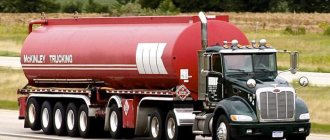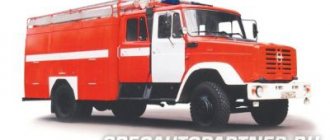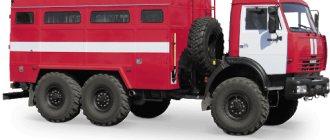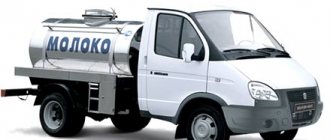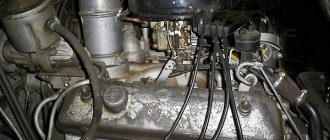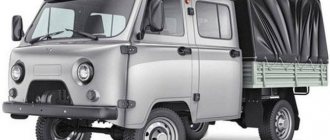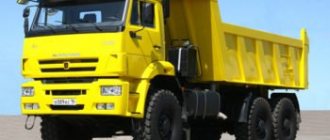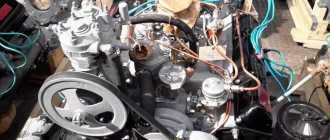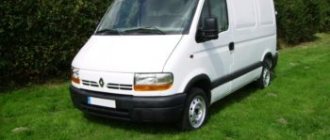Advantages of firefighting ZIL
So, why is it ZIL that is used as support in fire crews:
- The car is very unpretentious both in operation and maintenance.
- The machine can be used in a wide variety of weather and climatic conditions.
- The firefighter ZIL is a very maneuverable vehicle, which helps to place it in a place convenient for extinguishing.
- If we compare it with other cars of this class, we can immediately note the compactness of the ZIL. This is why the car can drive even into relatively narrow spaces.
- Unpretentiousness to the type and quality of fuel poured. Both petrol and diesel variations are available, which can be replaced with gas-cylinder equipment. The latter implies large savings on the maintenance of this official vehicle.
- Spare parts, as well as repairs for this car, are a relatively minor waste. Moreover, repairing a ZIL does not require contacting specialized service centers - in most cases, a full-time team of auto mechanics can handle it.
- A reasonable combination of cost and quality, which cannot be said about many other fire trucks.
- Sophisticated chassis design adapted to work in real conditions.
Basic information about ANR
Pump-hose vehicle ANR-40 based on ZIL-130
Along with tank trucks (AT), pump-hose vehicles were the most common type of fire fighting vehicles, however, in recent decades, for various reasons, their popularity in the fire department, and as a result, their prevalence has noticeably decreased. Today, even in large cities, it is difficult to find fire trucks of this type in service with departments.
ANR, as well as AC, are classified as the main fire fighting vehicles for general use. The main difference between these two types of fire extinguishing agents is that the ANR does not have a container for water (and other fire extinguishing agents). The space freed up as a result of this decision is used to increase the number of combat crews traveling in a vehicle, as well as the supply of fire-fighting equipment.
Average specifications
The most popular ZIL fire trucks are the following models:
- 2,5/40;
- 3/40;
- 3,5/40;
- 4/40.
Let's take a closer look at the technical characteristics of special vehicles in the table. For example, we will use the classic ZIL-130 (firefighter) model range - A-40 (131).
| Total information | |
| Platform type | ZIL-131 |
| Length Width Height | 7.64/2.5/2.95 m |
| Weight | 11 t |
| Highest speed | 80 km/h |
| Crew | 7 people |
| Wheel formula | 6x6 |
| Total mass distribution | |
| Front axle/rear bogie | 2.98/8.17 t |
| Fire monitor | |
| Model name | PLS-P20 |
| Waste of water | 19 l per second |
| Foam ratio at the exit of the fire monitor | 6 |
| Capacity | |
| Tank with foaming agent | 170 l |
| Water tanks | 2.4 t |
| Alert | |
| Siren | Electric or gas |
| Foam mixer | |
| Variety | Water jet ejector |
| Foam performance level in multiples of ten | 4.7; 9.4; 14.1; 18.8; 23.5 m3/min. |
| Suction device | |
| Type | Air or gas jet ejector |
| Highest suction lift | 7 m |
| Time interval for filling the pump with water (provided: suction height - 7 m, length/diameter of the suction hose - 8 m/125 mm) | 55 seconds - for the ejector, 30 seconds - for vacuum jet pump |
| Fire pump | |
| Model variation | PN-40UV |
| Type | Single stage centrifugal |
| Pressure | 100 m |
| Innings | 40 l/sec. |
| Rotation frequency | 2700 rpm |
| Maximum/reference suction lift | 7/3.5 m |
Now let's talk specifically about the model ranges of ZIL firefighting vehicles.
ANR tasks
- Ensure the arrival of combat crews, rescue equipment, fire-fighting equipment, tools, and equipment necessary to establish communications in difficult terrain.
- Water intake can be organized regardless of the suitability of reservoirs with steep banks; water intake can also be carried out from bridges, piers, overpasses, etc.
- High speed of laying ANR hose lines over long distances up to 40 km/h.
- A pump-hose vehicle must pump out significant volumes of water in natural emergencies.
- When folding the complex, the hoses must be lifted mechanically. If there are open sources, the pump-hose vehicle takes water from a depth of 15 meters relative to the module level or 60 m along a horizontal line from the surface of the reservoir to the pump.
Model 130
The most common model of this fire fighting equipment is the ZIL 130. More than 10 versions of the vehicle were produced, the most popular of which was the ZIL 130 AC 40 - 63B.
Let's look at the distinctive features of this model range:
- The water tank was designed for 2.36 tons, and the foam concentrate tank was designed for 170 liters.
- The cabin is an all-metal structure with four doors and two rows of seats. There are compartments for storing equipment.
- Centrifugal pump with single-stage operation.
- 8-cylinder four-stroke power unit with liquid cooling system.
- The chassis is a spar frame, reinforced with special inserts.
- Springs and telescopic shock absorbers in the suspension.
Symbol ANR
Symbol of a pump-hose fire truck (ANR)
Sources:
- GOST R 53248-2009 Fire fighting equipment Fire trucks. Nomenclature of indicators.
- Firefighting Supervisor's Handbook. V.P. Ivannikov, P.P. Klyus. –M.: Stroyizdat, 1987.
- Fire equipment: textbook. M.D. Bezborodko. –M.: 2004.
Model 131
Developed in 1968, this series was also quite popular - it was produced in 1970-1984. There were two versions - 137 and 137A.
Let's go through the features:
- The volume of the water tank is 2.4 tons.
- Foam tank - 150 l.
- Engine - 150 hp
- Fuel consumption - 40 l/100 km.
- A unique water heating system using exhaust gases.
- Manual monitor control. The range of the water jet is 60 m, the range of foam is 50 m.
- The rotation of the fire monitor is +90... -20 degrees vertically.
Each of us has probably seen the red and white ZIL fireman rushing to a call or returning to the garage. As we have seen from the technical characteristics and identified number of advantages of this machine, it will be in the service of Russian fire departments for a long time - due to its versatility, unpretentiousness and full compliance with the conditions of the work performed.
Car history
In 1959, workers at the Likhachev plant were given a goal to improve the production of the “130” models and the “131” modification. This call for productivity was determined by the twenty-first party congress, or more precisely, by the plan adopted at it for the development of the national economy.
To achieve the goal, decent trucks were needed. However, ZIL-131 was intended for a special purpose - for military purposes. Previously, the Soviet army had at its disposal the ZIL-157, which by the end of the 50s was beginning to become obsolete.
ZIL-157
Despite the fact that prototypes of the ZIS-130 began to be tested back in the mid-50s, the car was planned to be sent to the assembly line only in 1962. Such a long period was partly due to a number of unforeseen situations, which, although not immediately, were successfully dealt with.
Subsequently, on the basis of this model, they began to develop the ZIL-131. Prototypes of the military modification appeared in 1966 and almost immediately successfully passed all tests. And so, in 1967, the Likhachev plant finally began production of the 131st model.
Over a fairly long period of testing, the machine's performance and operational capabilities were significantly improved. This was also facilitated by the constant improvement of the ZIL-130 base chassis.
As a result, the basic characteristics of the car were improved in many ways, the cross-country ability and load-carrying capacity were increased due to the new frame structure and improved engine, the driver’s workplace, together with the cabin, acquired the first signs of ergonomics.
For the 1960s, such innovations for off-road trucks were enthusiastically received. Production did not stop there, and in 1986 the ZIL-131 received a new power unit, which made it possible to raise the bar of capabilities and reduce resource losses when operating the vehicle.
Online auction Antiquity
Online auction Antiquity
All from the ruble!
- Main section
How the auction works
Why register?How to buy?How to sell?Frequently asked questionsCart
Sell
RegistrationRecent
- Lots
SectionsSearchFavorites
- Lots
SectionsSearches
- Recent
- Lots
- Sections
- Search
Favorites
LotsSectionsSearchingBuying
- Home page
Featured Lots
Bargaining now I bought Didn't buy Subscribe to new lots Requests for lots from sellers Sellers' offers Selling
- Sell
On sale
TransactionsCompleted tradesTop up your accountDemandSeller settingsMy store [more details]ActivationSettings
- I'm buying
Featured Lots
Trading nowI boughtSubscribe to new lotsRequest lots from sellersSellers' offersSellingSellOn saleTransactionsCompleted auctionsTop up your accountDemandSeller settings
| Welcome to the online auction Antiquity Use the topic sections on the left, the search bar at the top, or the tags on the right to search for items. Want to know more?
Recommended lots: (show all) 3500 RUR Lenin January 21, 1924 Album of wreaths 80 RUR F409. ICONS. HELICOPTER. MI-10. MILES.. GVF. CIVIL AVIATION. TRANSPORT. EMBLEM. 350 RUR Libya 1980-82 battle scenes 11 couplings 3000 RUR A. AND P. BARTO » THE GIRL IS A GIRL » EDITION. LATGOSIZDAT RIGA 1948 900 RUR Japan - efficiency mi# 4524 - 4533 - 2008 (20) - 50 years of diplomatic relations between Japan and Indonesia 35300 RUR 25 RUBLES 2013 20 YEARS OF THE ADOPTION OF THE CONSTITUTION OF RUSSIA CONSTITUTION OF THE RF SILVER RUSSIAN FEDERATION 499 RUR # Turks and Caicos 1990**mi.900-09 Birds, mnh [21;107] 35 RUR USSR badge, Almaty, needle RUR 249 1969KM 3812 LENIN IN YOUR YOUTH 100 ANNIVERSARY OF THE BIRTH FIRST YOUTH PHIL EXHIBITION PC SG Kyiv 50 RUR Postcard St. Petersburg. Picart. Etching. Ships. 1981. (12280o) 400 RUR Antique porcelain plate Dish. faience - royal porcelain - KUZNETSOV - 15 25 RUR KhMK with OM USSR. 1990 SHALYAPIN F.I. | |
| 100.00 rub. | 34 seconds |
| 1000.00 rub. | 35 seconds |
| 2500.00 rub. | 36 seconds |
| 1650.00 rub. | 43 seconds |
| 50.00 rub. | 46 seconds |
| Entrance: | |
| • Open your own store | |
| • Affiliate program |
| Frequently asked questions and support |
| Terms of Use | Sell | Registration | Open your auction | Affiliate program | Profile | Help All rights reserved 1999 - 2022. Old man |
Engine
The car engine is a four-stroke, liquid-cooled, gasoline, carburetor, eight-cylinder, V-shaped, model ZIL-130 or ZIL-508.10, with a rated power of 110 kW – installed in front of the cabin under a metal tail with an alligator-type hood. To supply air to the engine, an air channel is equipped in the hood, which is connected by a corrugated pipe to an air filter VM-16 or VM-21 of the inertia-oil type (with an oil bath and oil-wet filter elements), which has an air intake pipe to the brake system compressor.
Links
- [wiki-fire.org/%D0%90%D0%A6_40_131_137%D0%90.ashx ATs-40(131) model 137 (-137A) ]
| : Incorrect or missing image | This article lacks links to sources of information. Information must be verifiable, otherwise it may be questioned and deleted. You may edit this article to include links to authoritative sources. This mark was set on November 23, 2014 . |
K:Wikipedia:Articles without sources (type: not specified)
Weight of fire trucks based on URAL
URAL fire trucks are distinguished by increased cross-country ability and are in demand for extinguishing fires that occur in hard-to-reach places when it is necessary to drive through areas with a lack of normal road surface.
| AC modification | Volume of water tank, l. | Gross vehicle weight, kg . |
| AC 6.0-40 (5557) | 6000 | 15600 |
| AC 8.0-40 (5557) | 8000 | 21300 |
| AC 4.0-40 (43206) | 4000 | 13235 |
Autoladder AL30(131)L21
One of the most common ZIL-131 firefighting vehicles was the ladder truck. The rotating base of the ladder was installed above the rear chassis bogie. The stability of the vehicle was ensured by four outriggers at the corners of the platform. The drive for turning and extending the stairs was carried out from the power take-off. The ladder was controlled by levers on a remote control located together with the operator's seat on a rotating base. On the opposite side, a spare wheel was attached to the base.
The AL30(131)L21 machine was produced in the city of Torzhok from 1968 to 1983. Production continued later, but under the designation AL30(131)506. The main difference was the lengthening of the ladder knees by 300 mm. Cars produced before 1983 had a control panel with three levers; after modernization, there were four levers.
The maximum reach of the ladder up to 30 meters allows extinguishing in nine-story buildings. Its sections are equipped with three multidirectional illumination spotlights. When folded, it can be used as a crane boom. The vehicle was equipped with additional assault ladders.
